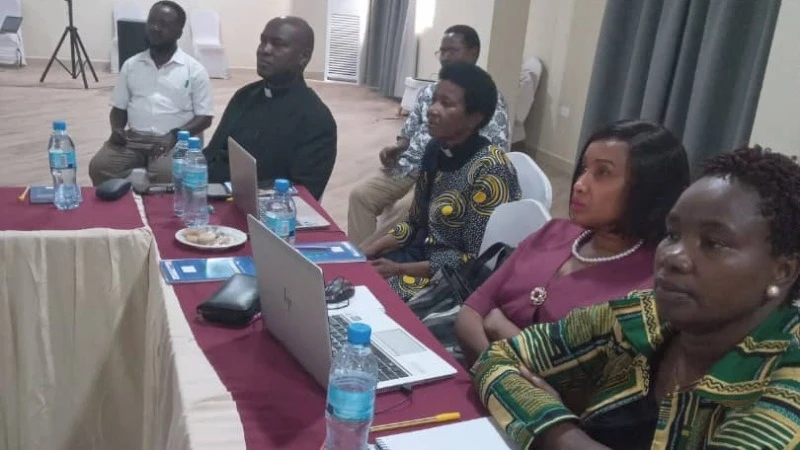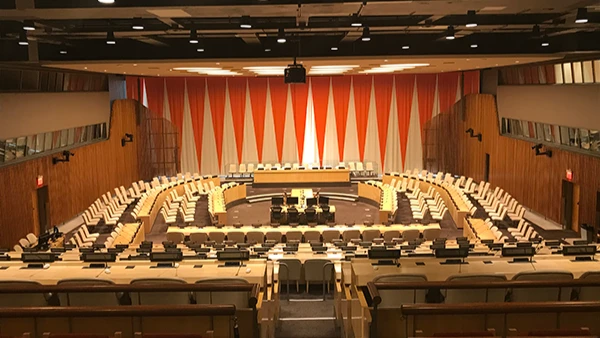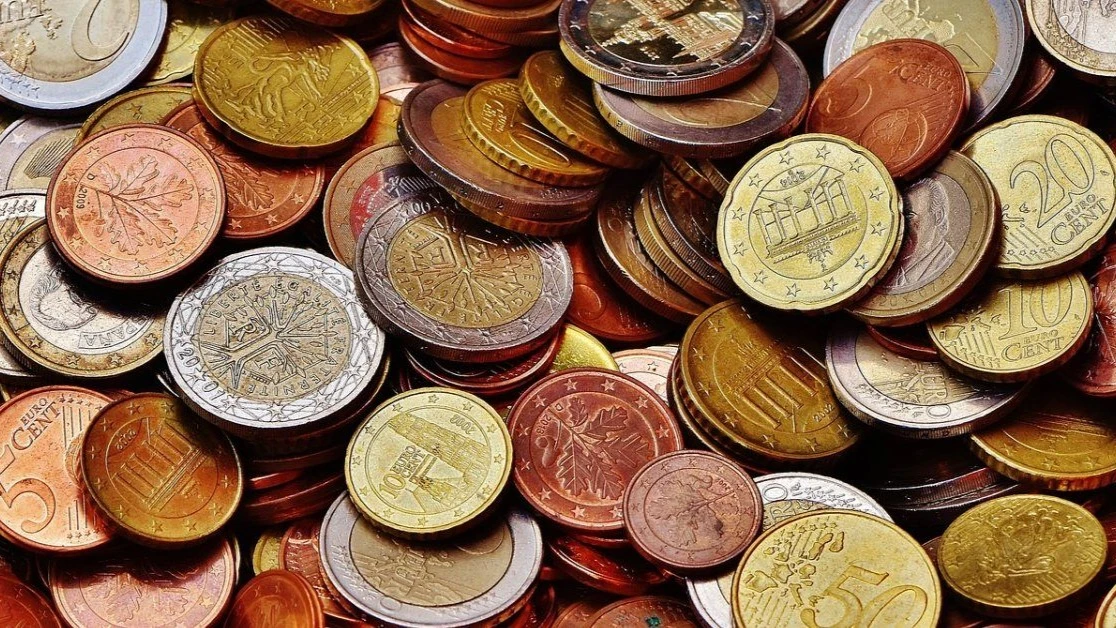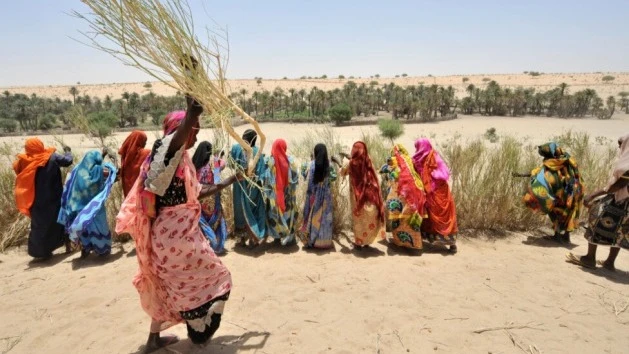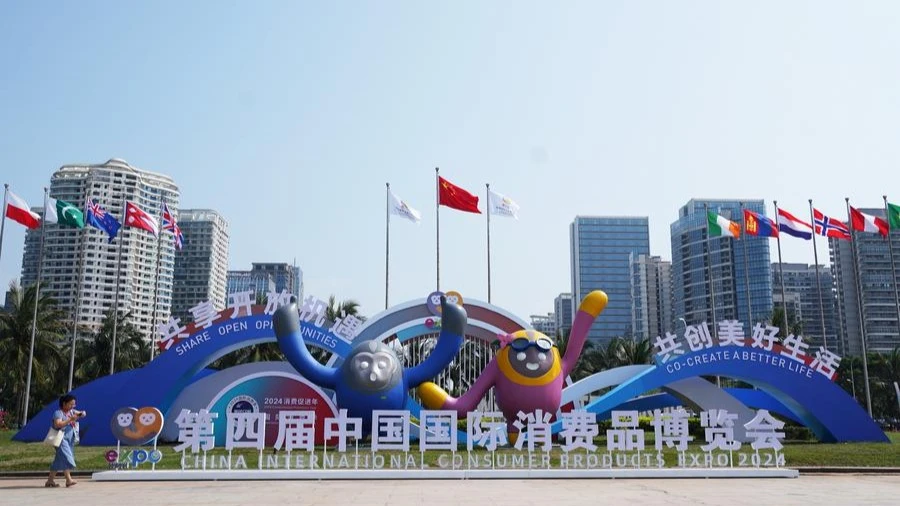Climate change uproots an indigenous village in Peru

FROM high atop a treeless ridge, Tsitsiri Samaniego can see his ancestral homeland stretching towards the horizon.
Samaniego, 40, is the leader of San Miguel Centro Marankiari, an Indigenous Ashaninka village cradled in the mountains of central Peru. Here, the Amazon rainforest blends into the Andean mountains, turning the rugged slopes to a lush blue-green.
But as he shields his eyes from the blistering sun, Samaniego detects signs of distress in the landscape.
Farmland has supplanted forests. The Perene River that snakes through the valley below has become contaminated, as towns and farms dump agricultural waste and sewage into its waters. Even the village’s cassava crops are blighted, with yellow lesions swelling on their leaves.
The scale of the environmental degradation has brought Samaniego to this high ridge in search of advice — from his ancestors, from the dead.
Pressing further up the incline, Samaniego arrives at a cemetery shrouded in a thicket of green. There, he pauses before an unmarked grave: that of his grandfather, Miguel Samaniego. The village of San Miguel Centro Marankiari still bears the late leader’s name.
Samaniego lays an offering of coca leaves on Miguel’s grave. Then, he lights a pipe to blow plumes of tobacco smoke over the headstone in a ritual blessing.
“This is where the spirits of our ancestors rest. They led the fight for our territory,” says Samaniego, following a moment of prayer. “When I come here, it gives me strength and courage.”
But facing the twin threats of development and climate change, Samaniego has steeled himself to a bitter reality: His ancestral land is no longer providing for his people. The land of his forefathers may not be the land of his descendants.
Back in his village, under the shade of his palm-thatched roof, Samaniego pores over a weathered map of Peru’s vast eastern Amazon. Migration, he feels, might be his community’s best option.
But leaving his homeland is a last resort — a complicated decision born of circumstances beyond his control.
In Latin America today, nearly half of all Indigenous peoples have migrated to urban areas due to land degradation, territorial dispossession, climate change and conflict, according to the World Bank.
“While Indigenous peoples have strong capacities for adaptation, climate change is accelerating on a path that is overwhelming,” said Pablo Escribano, a climate migration specialist for the International Organization for Migration, a United Nations agency.
“We’re now seeing Indigenous populations engaging in temporary and permanent movements to cities.”
The stakes of that migration go beyond individual communities, though. Indigenous peoples represent just six percent of the global population, but the World Bank estimates they help steward 80 percent of the planet’s remaining biodiversity.
For that same reason, experts warn that Indigenous populations are particularly vulnerable to the forces driving climate change: from glacial melt and sea level rise to the deforestation that releases tonnes of carbon into the atmosphere every year.
“Their livelihoods are often very dependent on climate variables, which is affecting food security,” Escribano explained.
In Samaniego’s case, his village is flanked on all sides by settlers from the high Andes escaping poverty, who are steadily absorbing territory occupied by the Ashaninka for generations.
The incoming farmers have razed much of the humid rainforest near the village to plant groves of citrus, avocado and coffee. That, in turn, has altered the local rain cycles, bringing extreme heat and drought to San Miguel Centro Marankiari.
The result has been the desiccation of his community’s cassava and plantain crops, Samaniego explains. Food and clean water have become scarce. And tensions with the neighbouring landowners have soared.
“We’ve always protected our forests,” Samaniego said. “But outsiders have come in with a mentality to destroy and produce. It’s affecting everything. The climate is changing here in the highlands.”
Wearing a tunic the colour of red earth and a headdress crested with ruby macaw feathers, Samaniego describes how his village, home to 150 people, has always defined itself in relation to the forests around it.
Marankiari itself means “serpent” in the Ashaninka language. When Samaniego’s grandfather Miguel first settled his family here, the region teemed with snakes, tapirs and large man-eating cats, immortalised in stories told by firelight.
“All of this land is connected to our legends,” said Samaniego. But those species have long since vanished, he added, as the rainforest rapidly shrinks.
In 2022 alone, Peru’s Amazon lost 144,682 hectares (357,517 acres) of old-growth forest, according to the Monitoring of the Andean Amazon Project, a conservation nonprofit. Small-scale agriculture has fueled much of that destruction.
Strolling through his village, 68-year-old Tsonkiri Samaniego — Tsitsiri Samaniego’s uncle — plays a haunting melody on a handmade flute. He forages wild reeds to make the instrument himself, in order to pass on the music his grandfathers taught him.
But the reeds too have grown scarce. Each year, more land is encroached upon, Tsonkiri explained. What worries him most is the steady unravelling of Ashaninka culture and language, both deeply rooted in the natural world.
As a child, Tsonkiri remembers hunting deer, wild turkey and partridge in the unbroken forest. In those years, a heavy silence permeated the village, only interrupted by the stories told at nightfall over crackling bonfires.
But around the time Tsonkiri was born, a change was falling over the valley. Tsonkiri traces it back to the “coffee boom” of the 1940s, when coffee consumption peaked in countries like the United States — and farmers in Peru responded by cultivating forested land along the eastern slopes of the Andes.
Tsonkiri claims that, back then, his grandparents and parents were forced into indentured labour, toiling long hours on industrial farms in exchange for payment in goods.
Their exploitation did not end there. In the early 1950s, Tsonkiri said commercial farmers conned his family into surrendering hundreds of hectares of ancestral land in exchange for clothing and five crates of canned fish.
When Miguel, his father, died in 1972, Tsonkiri assumed the role of village leader. He was only 17 years old at the time. In 1978, he helped earn San Miguel Centro Marankiari the legal title to 147 hectares (363 acres), a small sum compared with the vast territory once occupied by his ancestors.
The villagers, however, have no legal claim to their most sacred sites in the Perene Valley, including salt mines, caves and mountains steeped in history and lore. Many of those sites fell into the hands of private owners, putting them off limits to the Ashaninka people.
“Before, our territory was never delineated. We were free, like the animals, to roam from place to place. When we were reduced to living on parcelled land, our territory was suddenly limited,” said Tsonkiri. “We can’t enter certain parts or hunt freely. It has been a type of prison.”
But even the village itself has not been immune to the ravages of a rapidly changing climate.
In her garden, Samaniego’s mother, Pachaka Samaniego, harvests a medicinal root called ibenki, which the Ashaninka consume to alleviate anxiety.
Reduced rainfall, however, has caused many of her medicinal plants to wither. But Pachaka, 58, remembers the environment was not always this way.
A midwife and traditional healer, Pachaka began learning to treat illnesses at age seven. Her grandfather taught her by taking her into the forest to identify the pharmacological wonders within.
Pachaka was raised in a different Ashaninka village, nearly 200 kilometres (120 miles) to the north of San Miguel Centro Marankiari. But at age 14, she moved here to marry Samaniego’s father.
At the time, medicinal plants were abundant in the village. Pachaka relied on them while she was in labour: She gave birth to 10 children, including Samaniego. Herbal infusions helped dull the labour pains, and she used sharpened palm reeds to cut her newborns’ umbilical cords.
She fears that present-day deforestation might result in the loss of that traditional knowledge.
“The forests have always been our pharmacy, but they’re killing them as if they were people,” Pachaka said of the nearby settlers.
Inside her earthen-floor kitchen, Pachaka tends to a pot of cassava boiling over firewood. Shafts of sunlight leak through the bamboo walls, illuminating the swirling smoke from the cooking.
The calorie-rich tuber is used to make masato, a fermented yoghurt-like beverage that underpins daily life for tribes throughout the Amazon basin.
But this staple crop has become more rare in San Miguel Centro Marankiari as a result of deforestation. Without as much forest cover, erosion has increased, and soil quality leaches away with each passing rain.
Sapped of nutrients, the land yields less cassava, Pachaka explained. Nowadays, she makes the long journey down a dusty, rutted road to buy the root vegetable from a nearby town.
“We don’t live like we used to. Scarcity is everywhere. The soil is impoverished, so we grow what we can to survive. We work harder to produce less,” Pachaka said.
Even the aquifers are drying up, she added. Ever-more intense droughts have taken their toll, as have the ever-expanding farms. Pachaka said her fellow villagers also face pressure to sell off or lease what remains of their territory.
“There is nothing left for us here. In a new territory, we might finally have an abundance in food and a place to continue our culture,” Pachaka said.
The World Bank estimates that if climate change continues apace, 216 million people could be displaced by 2050. Latin America could witness 17 million internally displaced climate migrants.
Last year, Samaniego journeyed to the eastern Amazon department of Ucayali, travelling days and hundreds of kilometres by river. There, he identified several thousand hectares of fallow land near other Ashaninka communities along the remote Sheshea River where he hopes to relocate his village.
In 2015, for example, the Rainforest Foundation reported that Indigenous Peruvians had more than 20 million hectares (49.4 million acres) of land title applications pending, leaving an area twice the size of Guatemala in legal limbo.
But Samaniego remains undaunted by the obstacles. He plans to start a phased relocation to Ucayali later this year and has recently arrived in Ucayali with family to establish a base in the region.
“This project is about recuperating territory, responding to climate change and reclaiming our culture. Yes, there are risks and challenges, but we have no choice but to migrate,” said Samaniego.
Clutching a silver pendant around his neck passed down to him by his grandfather, Samaniego added that he is hopeful that his next scouting journey to Ucayali will bring his community closer to its promised land.
“This is a fight. We have the energy. We have the idea, the strength and the alliances,” he said. “Our territory has been massacred, so why not go in search of our new paradise?”
By Neil Giardino
Top Headlines
© 2024 IPPMEDIA.COM. ALL RIGHTS RESERVED



